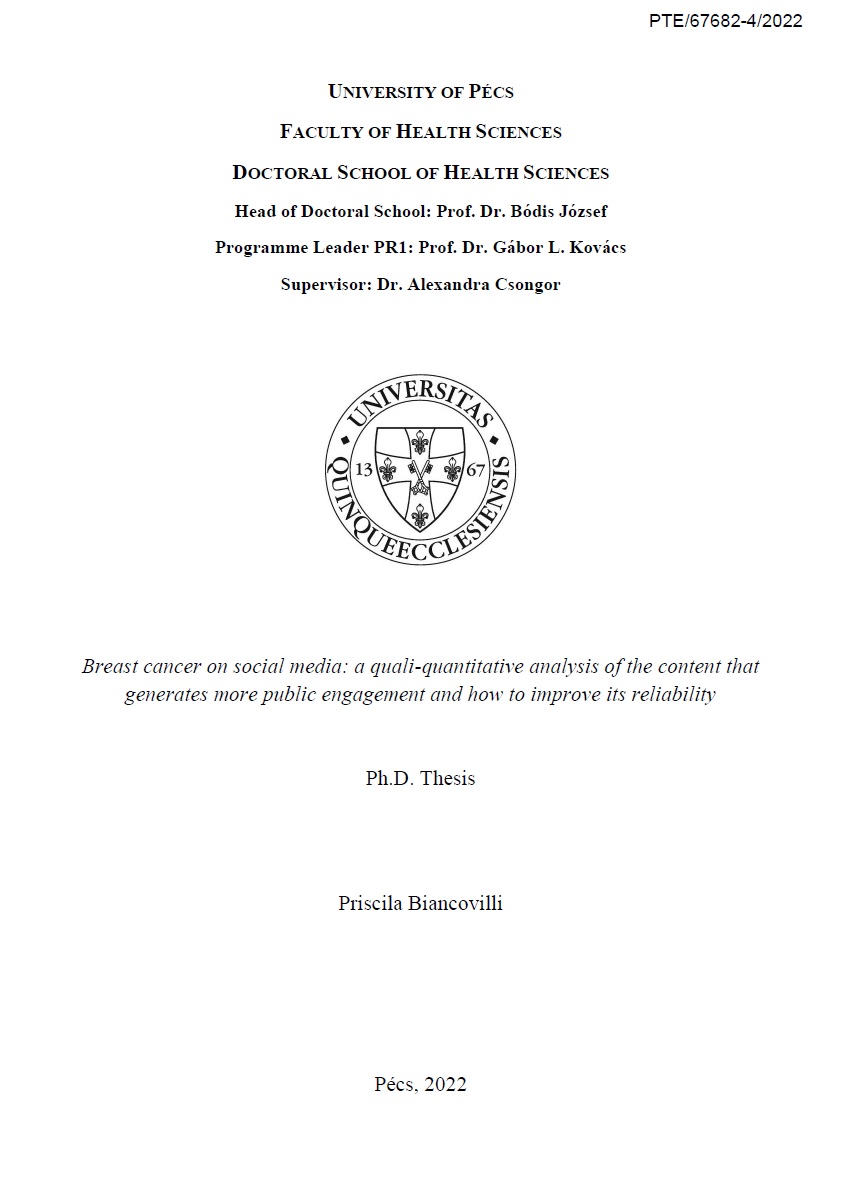Breast cancer on social media: a quali-quantitative analysis of the content that generates more public engagement and how to improve its reliability
Abstract
Female breast cancer is the most diagnosed type of cancer among women in 158 countries worldwide (IARC, 2020). It is important to reiterate that changes in the population's lifestyle and habits can reduce the likelihood of the disease onset, and early-stage cancers are easier to treat than later-stage cancers. However, the rate of adherence to examinations to detect breast cancer in countries such as Hungary, Cyprus, Slovakia and Bulgaria is low; the proportion of women aged 50-69 years who had undergone a mammogram examination was below 40% in 2016 and 2017 (Gaál, 2020). One step to change this scenario is correctly informing the population about the importance of early diagnosis, prevention, risk factors and screening exams. Therefore, the first aim of this study is to comprehensively analyse news stories about breast cancer shared on social media. Our goal is to identify the main characteristics regarding the narratives in our sample, including the scientific credibility of the content with more public engagement. The second part of this thesis is dedicated to analysing a questionnaire applied to healthcare professionals across Hungary to understand if they work with social media platforms and, if so, what type of content they consume or produce. The results reveal that content classified as "rumours" tends to be more shared than scientifically correct content, both in digital and traditional media. “Rumours” is less frequent in the sample but totalled 5,755,192 shares. Meanwhile, the “verified” stories had 1,747,352 total shares (3.29 times less). Moreover, 5.08% of the stories comment on prevention and 19.7% mention early detection. In relation to the questionnaire, it was found that the majority of respondents (84.6%) use the internet to read news related to breast cancer. Professionals were also asked to give a grade from 0 to 10 to the health literacy of their patients regarding breast cancer, and the average was 4.68. The respondents of the survey seem to agree on the importance of a wider use of media (including social media) to communicate with the lay population and cancer patients. The findings of this study may be beneficial to assist in the development of online health communication strategies in breast cancer. Doctors, scientists, and health journalists can develop a dialogue with the lay audience on the topic, countering online misinformation.

